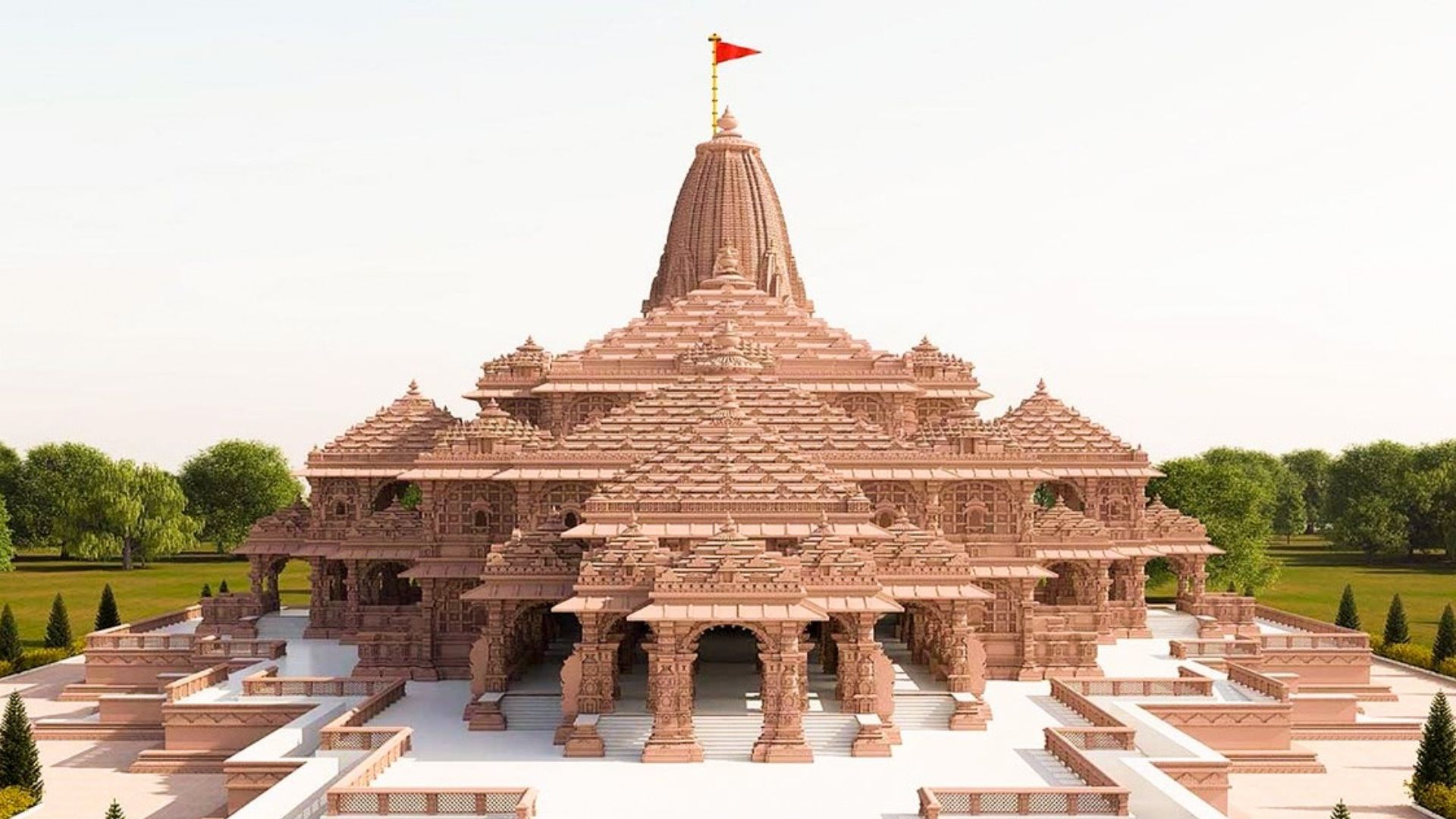- Spread across 2.7 acres, the Ram temple in Ayodhya is a spacious structure. Reflecting the grandeur and scale of the architectural endeavor, the temple’s built-up area is an impressive 57,400 square feet.
- The temple’s measurements, measuring 235 feet in width and 360 feet in total length, are remarkable. When the peak is included, the temple’s total height is 161 feet. This substantial building is three stories tall, with a 20-foot ceiling on each floor.
- A sizable number of columns support the temple’s foundation. There are 160 columns supporting the ground floor and 132 supporting the first floor. The temple’s overall stability and beauty are enhanced by the 74 columns that support the second floor, which features elaborate design and detailing.
- The temple is built with three floors, each standing to a height of twenty feet. The careful arrangement of space makes it possible to incorporate a variety of ceremonial and functional areas, adding to the temple’s adaptability and significance.
- In addition to its religious significance, the Ram temple is intended to serve as a center of culture. The incorporation of educational spaces and meditation areas is indicative of a comprehensive strategy towards the temple’s role in promoting spiritual, cultural, and educational endeavors.
- By eschewing the use of steel or iron, the Ram Mandir in Ayodhya is built in a distinctive manner. Rather than utilizing modern building materials, the project adheres to traditional building methods and shows a dedication to sustainability.
- The primary temple building is made of Bansi Paharpur Pink Sandstone, which is mined in the Bharatpur area of Rajasthan. The plinths are made of granite stones, giving the temple a strong and resilient base. Granite is used, which contributes to the temple’s overall longevity and adds structural strength. For the inlay work, colored and white Makrana marble are used in intricate patterns.
- The building uses unique bricks called “Ram Shilas,” which have the words “Shri Ram” engraved on them. These bricks link the contemporary craftsmanship of the temple with historical symbolism by creating a symbolic parallel with the stones thought to have been used in the construction of Ram Setu.
- The building includes Shaligram rock, a revered fossil discovered in Nepal’s Gandaki River. The Shaligram, which is revered in Hinduism and is seen as a representation of Lord Vishnu, gives the temple a more spiritual quality.
- The architectural marvel was expected to cost ₹1,800 crore, according to the Shri Ram Janmabhoomi Teerth Kshetra. The pursuit of building the Ram Temple was reported to have cost ₹900 crore between February 5, 2020 and March 31, 2023.

















